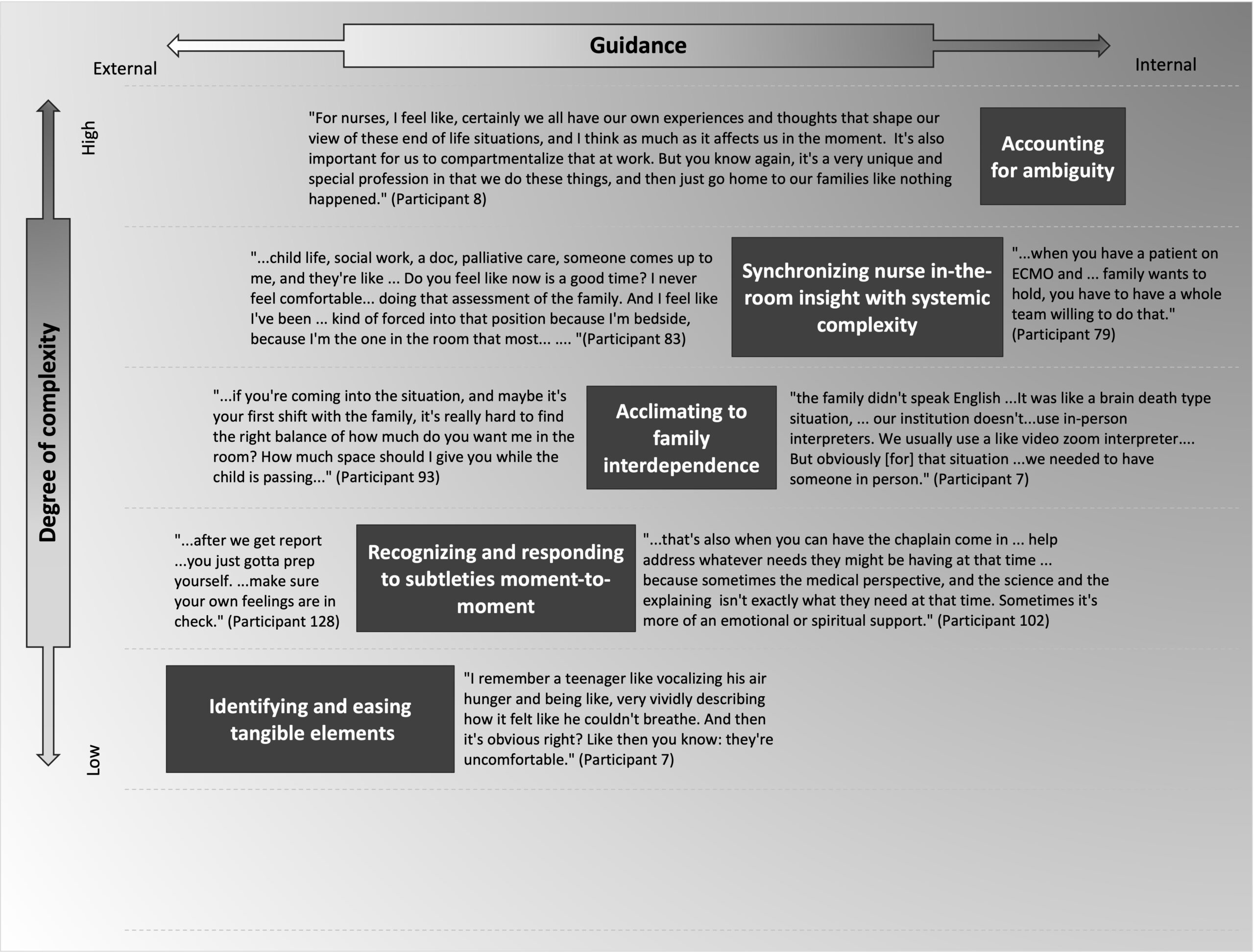Cancer, Survivorship, & Symptom Science Abene J, Deng J. Evaluating the role of dietary interventions…


The purpose of this study, funded by an AERO grant, was to uncover how bedside PICU nurses identify, assess, and respond to suffering among children nearing end-of-life and their families. We conducted qualitative focus groups with 19 PICU nurse participants.
Nurses described five interwoven themes: 1) Identifying and easing perceptible elements; 2) Recognizing and responding to subtleties moment-to-moment; 3) Acclimating to family interdependence; 4) Synchronizing nurse in-the-room insight with systemic complexity; and 5) Accounting for ambiguity. Themes range from straightforward nursing actions dependent on existing resources (e.g. Theme 1) to increasingly complicated and self-directed processes (e.g. Theme 5).
Nurses detailed elements of suffering they could “fix” with straightforward, externally guided interventions (e.g., pain medication). More complex tasks like optimizing care within complex familial and interprofessional team structures while navigating psychosocial responses from children and families challenged nurses. Nurses attempted to minimize EOL suffering amidst ambiguity and complexity using internally defined processes. These included managing the bedside environment (e.g., removing unnecessary equipment and staff) and titrating moment-to-moment care (e.g., considering whether to continue routine but painful dressing changes for a child likely to die whose parents remain steadfast in “doing everything”).
Nurses articulated challenges and barriers that provide important avenues for improving end-of-life care in the PICU in the future. Improving psychosocial training and optimizing interprofessional care systems could better support dying children and their families.
The findings nurses shared in focus groups directly informed the next phase of my research, which includes co-designing a conceptual framework and nurse-led intervention prototype with bereaved parents, bedside nurses, PICU and palliative care clinicians, and allied health professionals.
The full report can be found here.